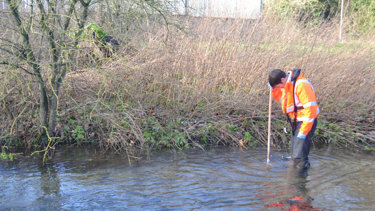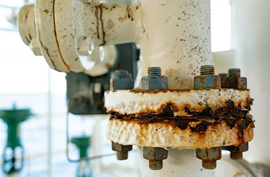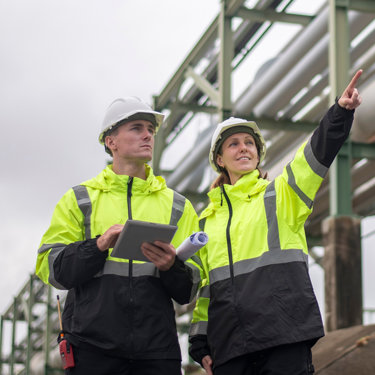Carrying out environmental impact assessments to as part of storm overflow assessment framework programmes
Published: 20 August 2024
The problem
As part of the client’s storm overflow assessment framework (SOAF) programmes, we undertook environmental impact assessments at 200 sites reporting on storm outfalls; either a CSO or treatment works/pumping station emergency outfall.
The solution
We undertook surveys every year in spring/autumn, consisting of:
- An aesthetic assessment of each storm outfall and the surrounding watercourse
- Upstream and downstream water quality readings
- Upstream and downstream aquatic macroinvertebrate samples

Samples are analysed in-house by certified experts at our laboratories in Wokingham and Risby, and data analysed using the River Invertebrate Classification Tool (RICT) to determine if the outfall is having any short or long-term impacts on the aquatic macroinvertebrate communities of the watercourses.
To date, we’ve fully surveyed 117 sites, with an additional 27 scheduled for their second survey this autumn.
We’ve also carried out aesthetic-only surveys on a further 50 sites (both inland on rivers and at transitional and coastal (TraC) sites), taking the total number of sites visited to circa 200.
Once each site has been visited twice, a full report is issued detailing the findings of the aesthetic surveys (including photos), the results of the invertebrate surveys, and the resulting short and long-term impact classifications.
Project outcomes
The aesthetic assessment allows our client to prioritise any works needed on visually unappealing sites, or with high amenity, i.e. near where people go in or close to the river, such as swimming, dogs, parks, gardens etc.
The invertebrate assessment allows for monitoring of water quality either side of the outfall, and can be used to determine whether any discharges are having negative impacts to the ecology of the watercourse.
The stage 2 environmental impact assessment contributes to the overall assessment of the outfall and helps determine what remediation work is needed, along with the cost and benefits of any work.
More from our Knowledge Hub
 Insights
InsightsEarth Day 2025: Enabling a sustainable future while supporting today’s infrastructure in an evolving energy landscape
 Insights
InsightsMitigating climate change risks through planned preventive maintenance
 Insights
InsightsProtective coatings: Safeguarding infrastructure against climate change
 Insights
InsightsDelivering the Water (Special Measures) Act: Supporting compliance and innovation
Environmental compliance today, creating a sustainable tomorrow
Helping you reduce risk to the environment and your operation by managing assets compliantly while achieving commercial, ESG, and net-zero goals.
Contact our experts
